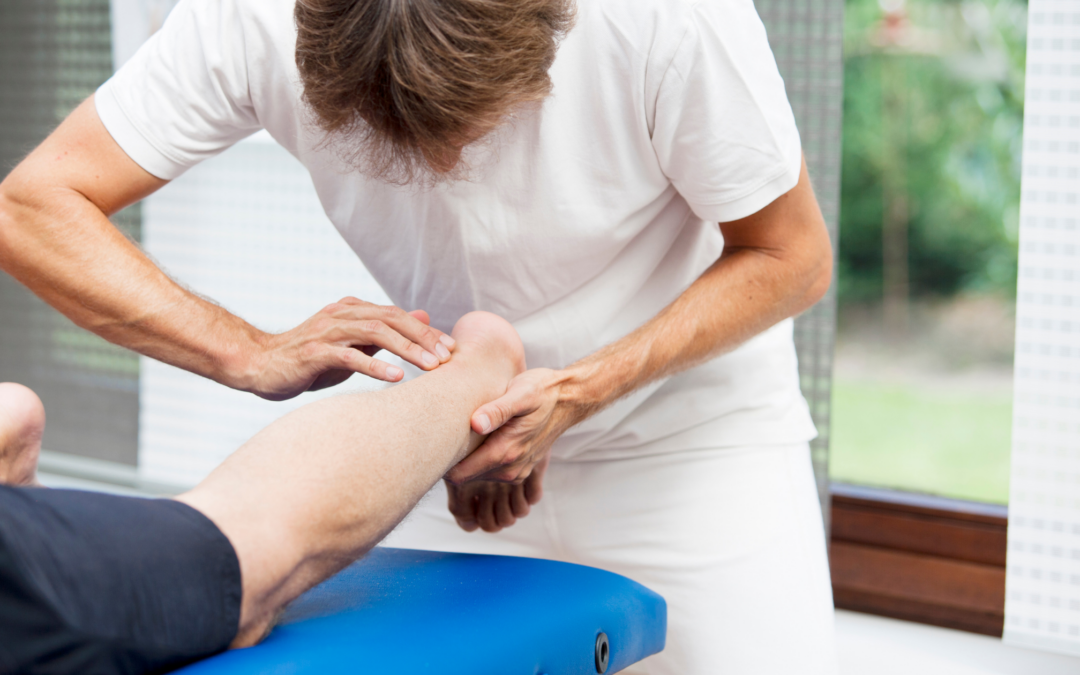If you have been feeling tenderness, pain, or discomfort around your ankle, you may be suffering from Achilles tendinitis.
What is Achilles Tendinitis?
The body’s largest tendon is the Achilles tendon. It joins your calf muscles to your heel bone and is used when walking, climbing stairs, standing on your tiptoes, running and jumping. The Achilles tendon can endure plenty of stress from jumping and running, but it is also prone to tendinitis, which is a condition that results from overuse.
Achilles tendinitis refers to the irritation and inflammation of this large tendon. This condition exists in two forms:
- Insertional Achilles tendinitis is when the lower section of your tendon, which connects to the heel bone, is affected.
- Noninsertional Achilles tendinitis is common among active adults; this condition involves inflammation and possibly small tears in the fibers of the central region of your tendon.
Symptoms
The most common symptoms associated with Achilles tendinitis are:
- Pain along the tendon or back of the heel that intensifies with movement
- Morning stiffness and pain along the Achilles tendon
- Localized swelling that gets worse as the day progresses
- Severe discomfort experienced the next day after exercising
If you feel a sudden “pop” in the back of your leg or heel, you may have torn (ruptured) your Achilles tendon. In this case, visit your doctor right away.
What Causes Achilles Tendinitis?
Repetitive stress on the tendon causes Achilles tendinitis. However, other factors can increase the risk of developing tendinitis. They include:
- Increased volume or intensity of workouts without providing your body time to adjust.
- Tight calf muscles –The Achilles tendon might be overworked if your calf muscles are tight and you start an intense training routine all of a sudden.
- Bone spurs where the Achilles tendon joins the heel bone; extra bone growth might rub against the tendon, causing pain and inflammation.
- Abnormal biomechanics such as having high or low foot arches (“flat feet”) can affect the load on the tendon.
- Obesity can also cause increased load on the tendon.
Treatment Options
Once diagnosed with Achilles tendinitis, there are several treatment options to consider with your doctor. They range from simple rest and anti-inflammatory prescriptions to more invasive procedures such as injections or surgery.
Common conservative treatments for Achilles tendinitis include:
- Applying ice to the affected region when in pain or after exercising
- Elevating your foot to reduce swelling
- Resting and minimizing physical activity
- Using a walking boot or brace to avoid heel movement
- Using oral or topical anti-inflammatory medicines such as NSAIDs
- Shifting to low-impact workouts, like swimming
- Doing gentle stretches followed by calf muscle strengthening exercises
- Going to physical therapy
- Kinesio-taping can help reduce pain and inflammation
- Wearing orthotics (heel lifts) designed with a built-up heel to help relieve tension on the Achilles tendon
- Extracorporeal Shock Wave Therapy (ESWT)
Ultrasound-guided injection therapies:
- Steroid injections – in some occasions a low dose of steroids may be considered to treat acute inflammation around the tendon, however, it is not recommended to treat tendinosis or tendinopathy (which is a chronic degeneration of the tendon). Steroids should not be injected into the tendon.
- Cell therapies including Platelet-Rich Plasma (PRP) injections in which a high concentration of platelets, derived from the patient’s own blood, release growth factors and proteins that promote healing, inhibit inflammation and promote collagen and blood vessel formation. These injections can also be used to treat tendinosis and tendon tears.
Depending on the condition’s location and severity, you may have to undergo Achilles tendon surgery. The surgery may involve:
- Gastrocnemius recession (lengthening of the calf muscles)
- Tendon repair
- Moving another tendon to the heel bone to strengthen the region
- Removing the damaged tendon tissue, bone spurs, or both
Seek Help
After proper home treatment and some rest, the acute symptoms of Achilles tendinitis tend to go away after a few days. However, if the pain lingers for weeks, or you suspect that you have a torn tendon, contact us immediately.
